Some links may be affiliate links. I may get paid if you buy something or take an action after clicking one of these.
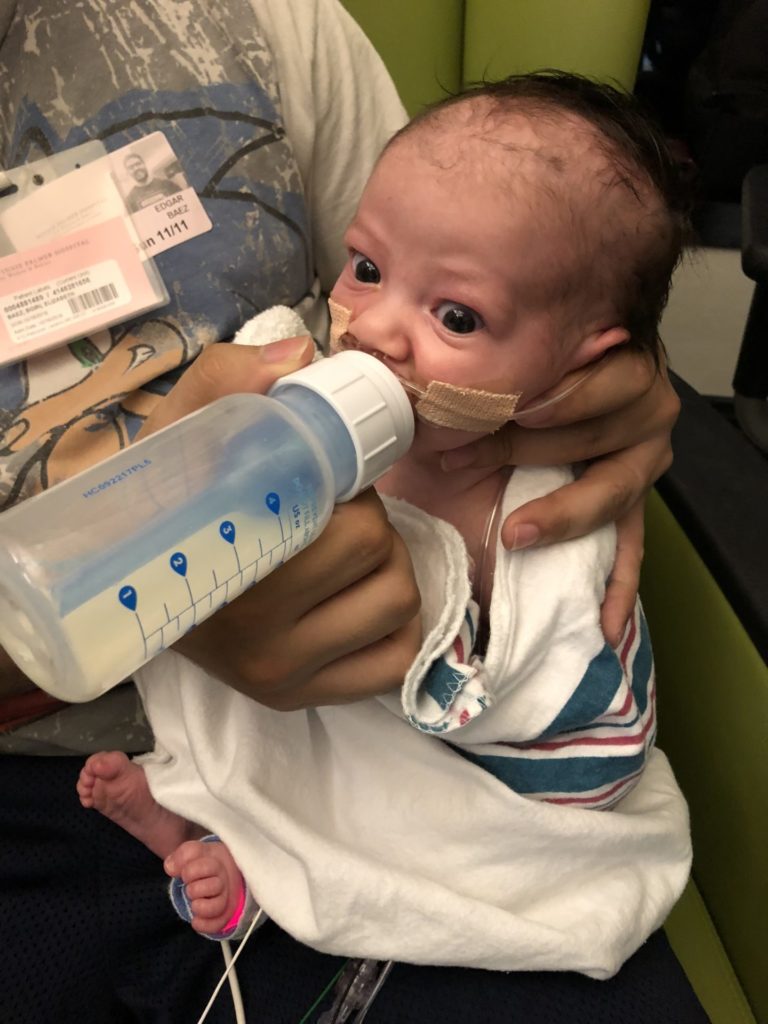
For a baby with a cleft palate, one of the most important steps in preparing for palate repair surgery is eliminating the bottle and transitioning to a sippy cup! Josie had to be able to drink all of her liquids from a cup (no bottle!) by the time surgery came around. This is because drinking from the bottle nipple could potentially damage the surgery site (the roof of her mouth).
Since she left the NICU, Josie had been drinking her milk from the Dr. Brown’s specialty feeding bottles. These bottles have a special valve that allows cleft palate babies to drink from them without needing suction. (Babies with cleft palates usually cannot form enough suction to suck milk out of a regular bottle.) This system worked wonderfully for Josie and I highly recommend it if your baby has an issue with forming suction!

However, the time soon came when we had to start to wean her off of the bottle. Josie’s craniofacial surgeon referred us to a speech therapist when Josie was about 6 months old, in order to make sure we had plenty of time and help with introducing her to the sippy cup.
Introducing the Sippy Cup to a Cleft Palate Baby
I definitely didn’t want to procrastinate with this process. If Josie wasn’t off the bottle by the surgery date, her surgery could be postponed! I didn’t want the anxiety of that hanging over my head for six more months. For that reason, I started giving Josie sippy cups and open cups very early on, just to get her familiar with them. I even kept a sippy cup in her toy box so that she could pick it up, handle it, and see that it wasn’t scary.
After Josie’s first visit to the SLP, I started making a real effort to transition her away from the bottle. The rule from Josie’s surgeon was simply that the sippy cup had to be free flowing. In other words, there should be no suction necessary to get liquid to come out.
Josie’s wonderful speech therapist recommended Take & Toss sippy cups, which are simple hard plastic cups with hard, free flowing spouts. I’ve heard great things about these sippy cups with lots of other cleft palate babies. Josie, however, never took to them. I think the hard spout was just too different from her bottle nipple. We also tried Nuby sippy cups, but Josie wasn’t a big fan of these either.

At this point, the only cup Josie really put up with was an open cup. I purchased the Reflo cup, which works really well for Josie. She actually still uses this cup now at 15 months! However, at 7 months, most of the liquid from the open cup spilled onto Josie’s lap and the floor. She just wasn’t very good at drinking from it at such a young age. I worried about how much she was actually drinking. I didn’t want her to get dehydrated. So I decided to keep looking for a sippy cup that Josie actually liked.

What Worked For Us
Finally, after experimenting with different cups for what seemed like forever, an awesome lady in a Facebook support group recommended that we try the steps below. This process actually worked like a charm for Josie. We were able to ditch the bottle at only 7.5 months!
STEP 1: Gradually increase the size of the bottle nipple to level 4.
The first thing I did was to gradually increase the flow of Josie’s bottle. This allowed her to more easily transition to the higher flow that comes with the sippy cup. Josie was already using a Level 3 nipple, so it was pretty easy to transition her to the Level 4.
STEP 2: Introduce Philip’s Avent soft spout penguin sippy cup.
Once Josie was comfortable with the flow of the Level 4 nipple, I introduced her to the Philip’s Avent soft spout penguin sippy cup – you can find it HERE or HERE. The penguin cup has a soft spout and all the baby has to do is apply pressure and liquid comes out. It works a lot like the Dr. Brown’s special feeder bottles that Josie was using previously. (Be sure to double check the product description before purchasing! The soft spout cup looks very similar to the hard spout cup, but you will definitely need a SOFT spout after palate repair.)

Going Cold Turkey
As soon as I was sure that Josie could physically get liquid out of the penguin cup, I eliminated the bottle entirely. Offering both just made Josie think that if she refused the cup hard enough, she’d break me down and get a bottle instead! (Which isn’t entirely untrue…)
So cold turkey was the way to go for us! And honestly, it only took about a day of crankiness for Josie to realize the sippy cup was all she was getting. She forgot about the bottle so quickly and was a sippy cup kid from then on!
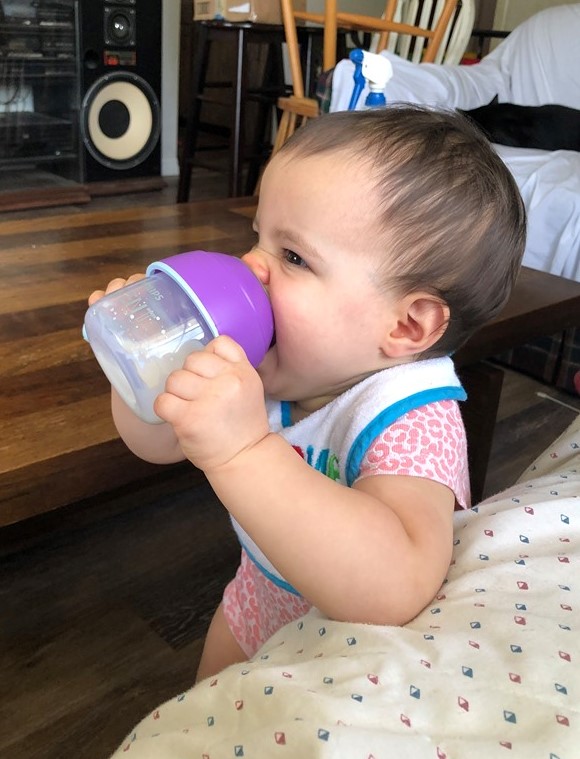
I also want to note that Josie still wanted to be held while drinking from the sippy cup, even for several months after she stopped using bottles. I also had to hold the cup for her while she drank. It was basically the same routine as when she had a bottle. I think she took a lot of comfort from cuddling her mommy while drinking milk.
Eventually (probably around 11 months) she began to hold the cup on her own, but she still usually sat in my lap to drink. We both enjoyed that feeling of closeness during milk-feeding time, even if Josie was unable to nurse directly at the breast.
Keep in mind, every child is unique and this process will depend on the individual child’s personality and abilities. Even the shape and severity of the baby’s cleft can affect this process. However, I really wanted to share the steps that worked well for my daughter in case it could help someone else!
Extra Resources
I also want to throw in a few links that were very helpful to me when trying to figure out how the heck to get Josie off the bottle.
- Cleftopedia – Sippy Cups – this guide was my bible when shopping for sippy cups. It gives a comprehensive list of the best cups to try both before and after palate repair surgery. It’s soooo helpful!
- Parents and Clefts – Palate Repair: Cups! – I love this page! It is such a detailed guide on transitioning your cleft kiddo to a sippy cup. If you are having trouble transitioning please check out this page. I guarantee you will gain some great insight.
- “Cleft Mom Support” Facebook group – this is an amazing support group for moms of cleft babies. It’s a great place to ask questions and a wonderful community to share updates and words of comfort. I believe this is the group where another mom recommended the penguin cup to me! I can’t find the original post but I give that mom all the kudos for saving me months of anxiety!
If you had a cleft kiddo who had to transition off the bottle pre-surgery, please comment down below and let me know what worked best for you! I would love to know your process and maybe it could help another mom out there who’s struggling right now!
Elizabeth From Scratch is a participant in the Amazon Services LLC Associates Program, an affiliate advertising program designed to provide a means for sites to earn advertising fees by advertising and linking to Amazon.com.
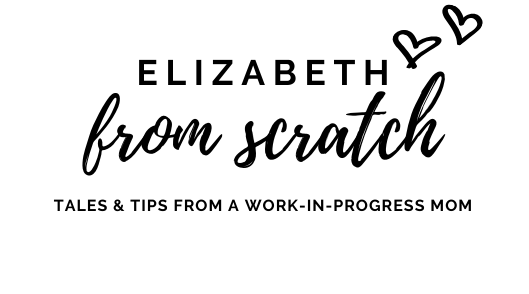
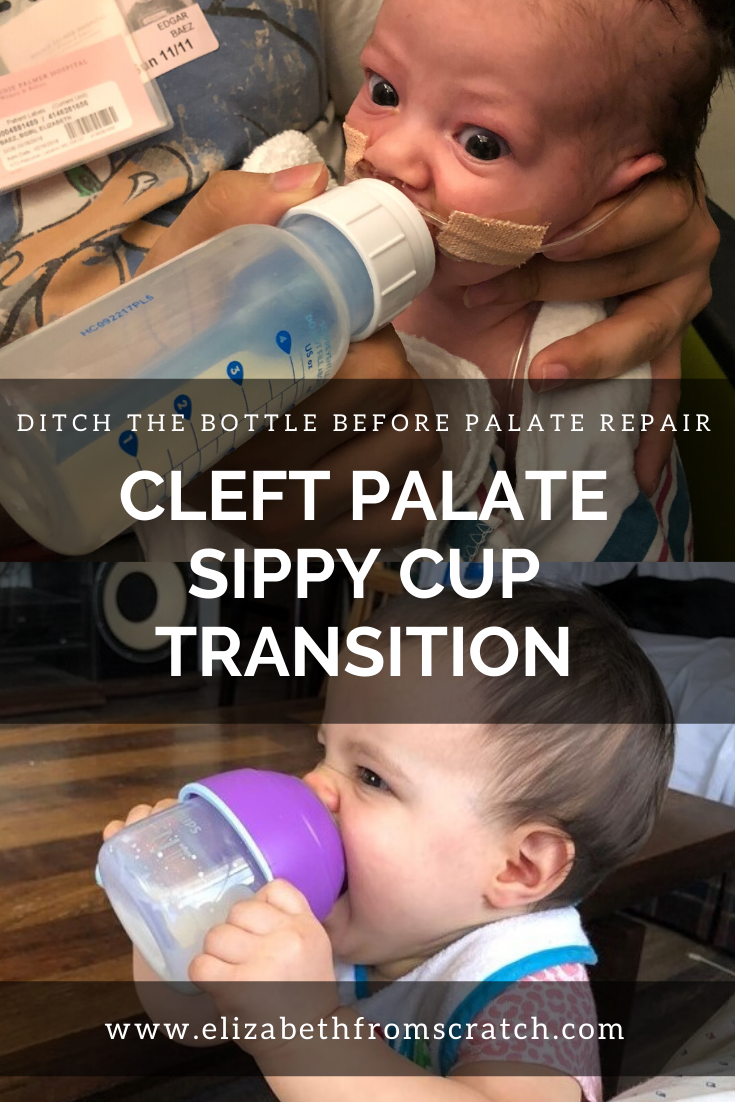


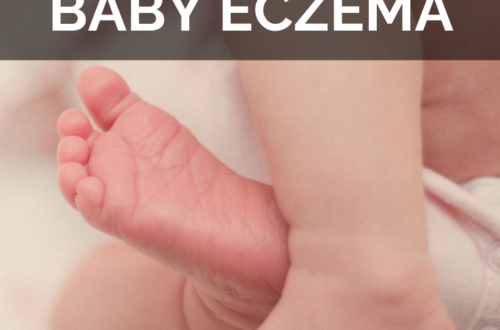
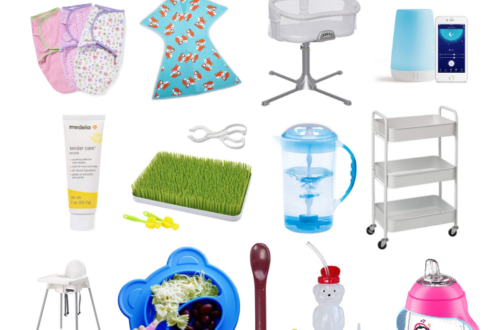
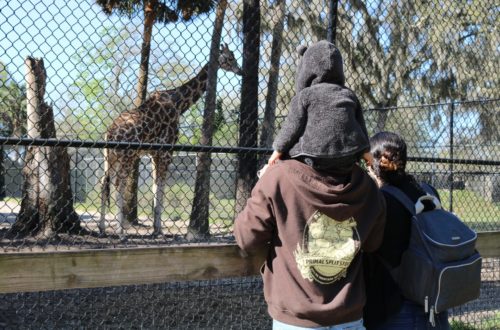
8 Comments
Umaima Javed
Hello, how are you?
Hope you and little Elizabeth are doing okay.
I wanted to ask about the size of the sippy cup you used? The 6months+ cup?
Elizabeth
Hi! Yes, it’s the Philips Avent sippy cup with the penguin on it. I think it’s also called My Little Sippy Cup. It’s 7 ounces. It’s for 6+ months. I hope that helps!
Pingback:
Danielle Garcia
Thanks for sharing! We transitioned early too, out of wanting her to follow typical schedule (which wound up being for the best since her surgery didn’t happen late until she was 14 months due to Covid). I did the 360 for a while but more wound up on her then in her mouth! We used the Oxo Soft spout. I just made the slit in the mouthpiece a little wider with a knife and it worked. I started the process by introducing it during meals and she was intrigued. Now she is a month post op and my doctor said to use any now which is why I am researching again! Thanks again for sharing!
Elizabeth
Hi Danielle! Thanks for the comment. I tried the 360 cup with Josie too but she never quite got the hang of it unfortunately. After surgery I kept her on the penguin sippy cup until her surgeon cleared her to drink from a straw. Then I introduced a straw cup to her using the honey bear cup from arktherapeutic.com. I can’t tell you how thrilled I was when she got the hang of it. My cleft baby could finally form suction!!! Woohoo!! Now she is absolutely obsessed with her little bear straw cup and won’t drink her milk out of anything else. I hope you find a cup that works for your little one. I never thought it could be so hard to find the perfect CUP, lol!
Dalia
Hi there
Thank you so much for this post! My baby, Hallie, is 7.5 months old and we’re starting to prepare for her surgery (whenever that might happen due to Covid delays). I accidentally ordered a Philips cup with a penguin on it.. but it has a hard spout, which Hallie can’t use as it requires suction. I just want to confirm that the cup you wrote about has a soft spout. The names of the cups are so confusing.
Thanks so much!
Dalia
Elizabeth
Hi Dalia!
Yes the penguin cup we used definitely had a soft spout. I just looked on Amazon and there are penguin cups with soft spouts AND hard spouts. It is very confusing sometimes! If you check the description on Amazon, it will usually say “soft spout” or “hard spout.” Also the soft spout cup that we used had a clear spout. (The hard ones look to be solid colored plastic.) The links in my post above should take you directly to the soft spout penguin cup. I actually just added a second link in case the first one is sold out.
Also I’m sure you know this, but the penguin cup comes with a hard plastic cover to protect the soft spout – just wanted to let you know in case you mistakenly thought that was the spout! 🙂 Please feel free to leave me another comment or contact me on instagram if you have any more questions. I’d love to help. I’ll be sending lots of good vibes to you and your baby as you prepare for surgery. It will be over before you know it!
Dalia
Thanks soo much, Elizabeth! Going to find you on Instagram now.
Hope you and Josie are keeping well!
🙂